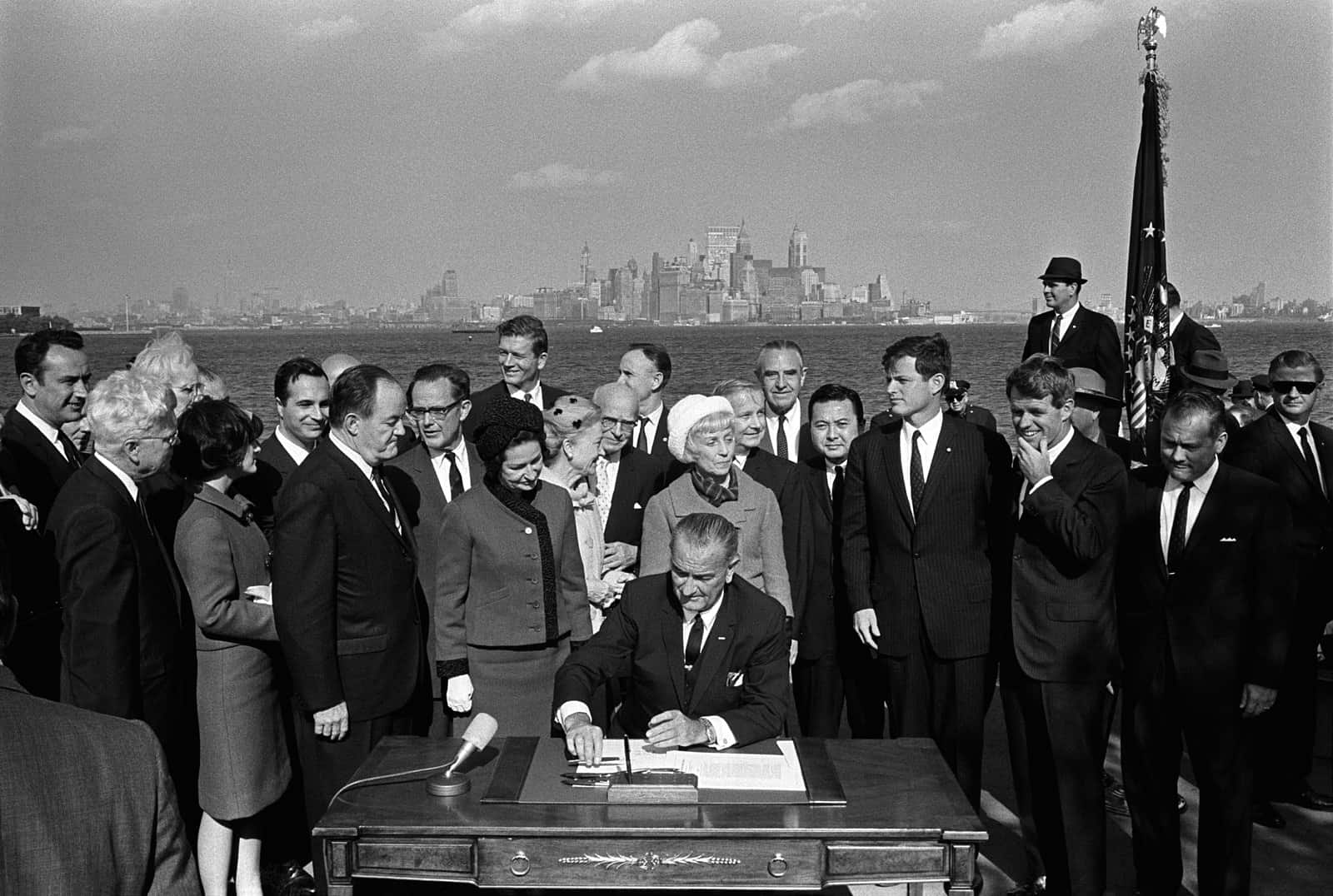Module 4: Post-1965 Korean America and 1992 Los Angeles
Have their ongoing ties with Korea impacted the lives of Korean Americans in United States?
The Immigration and Nationality Act of 1965, also known as the Hart-Celler Act, transformed Korean America. Before the act passed, fewer than ten thousand Koreans lived in the US. This number dramatically increased during the 1970s and ’80s, when Koreans were among the largest immigrant groups arriving each year. The law also changed the dominant class and educational backgrounds of Koreans coming to the US, as the majority were professionals who gained entry in the 1970s under the act’s skilled labor provisions.

Image 14.04.01 — President Lyndon B. Johnson signs the 1965 Immigration, or Hart-Celler, Act at Ellis Island, New York. This law dramatically increased Korean immigration between 1970s-80, altering the dominant class and educational background of the population.
Created date, created by Name, Title Italicized. Credit line indicating where the image is from. Metadata ↗
As the Korean American population rapidly grew, many turned to small business ownership to make a living. Korean Americans opened groceries, gas stations, liquor stores, and other family-run businesses in Black and Brown communities and neighborhoods. For various reasons, this ignited resentment and interracial tensions among the different ethnic groups, which resulted in altercations, boycotts, and a six-day uprising in Los Angeles, California, in 1992. Korean Americans remember this event as Sa I Gu, which means 4-2-9 in Korean, signifying the first day of the uprising (April 29).
This module is an overview of the unprecedented effects of the Immigration and Nationality Act of 1965 on the Korean American community, the events and histories that led to the Los Angeles uprising, and the aftermath of this event.
How did the 1965 Immigration Act transform Korean American communities?
How did the media play a part in creating harmful depictions of Korean Americans that led to the devastation of Sa I Gu?
What are some of the legacies of Sa I Gu?








